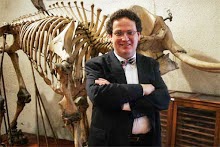“Camoflaging of courses to make them appear vocational is becoming an art of its own, and it is amusing to see colleges listing the only vocational benefit derivable from their courses of art as that of teaching art.
“If a course is limited to training teachers and those teachers are to teach others, just when will the vocational practice of the individual begin? How some schools do hate to roll up their sleeves and begin on the dishes!
“They will teach the lofty principles, only the theory, and George can flounder around and find the application later. And that is just why all the American Georges are about fifty years late in industrial art today.”
— Pedro J. Lemos, Leland Stanford Junior University, “The Industrial-Arts Magazine,” 1919.
The roll-up-your-sleeves, boots on the ground work of taxonomy is in a position not entirely dissimilar to that of the industrial arts at the turn of the last century. You can only talk about prosaic matters such as writing functional diagnostic keys or informative species descriptions, publishing floras or revisions or monographs, or translating cladograms (or, more often, neo-phenetic branching diagrams) into formal classifications and names, in hushed tones. Rather than openly celebrating the reciprocal illumination among fossils, anatomy, ontogeny, and molecular sequences, we as a community accede to the politically correct view that "phylogenies" are reconstructed from molecular data and that other characters are simply hung on this received knowledge of branching patterns like ornaments on a Christmas tree, after the fact and uncritically analyzed. We teach theory of phylogenetics and train students in the latest moelcular techiques, with no expectation that degree recipients will do much to address the messy, real world challenge of exploring, discovering, describing, classifying, and naming the ten million species of plants and animals that remain unknown to science. Refined, intelligent, right-minded people simply don't do taxonomy. They only teach the popular bits of it.



No comments:
Post a Comment